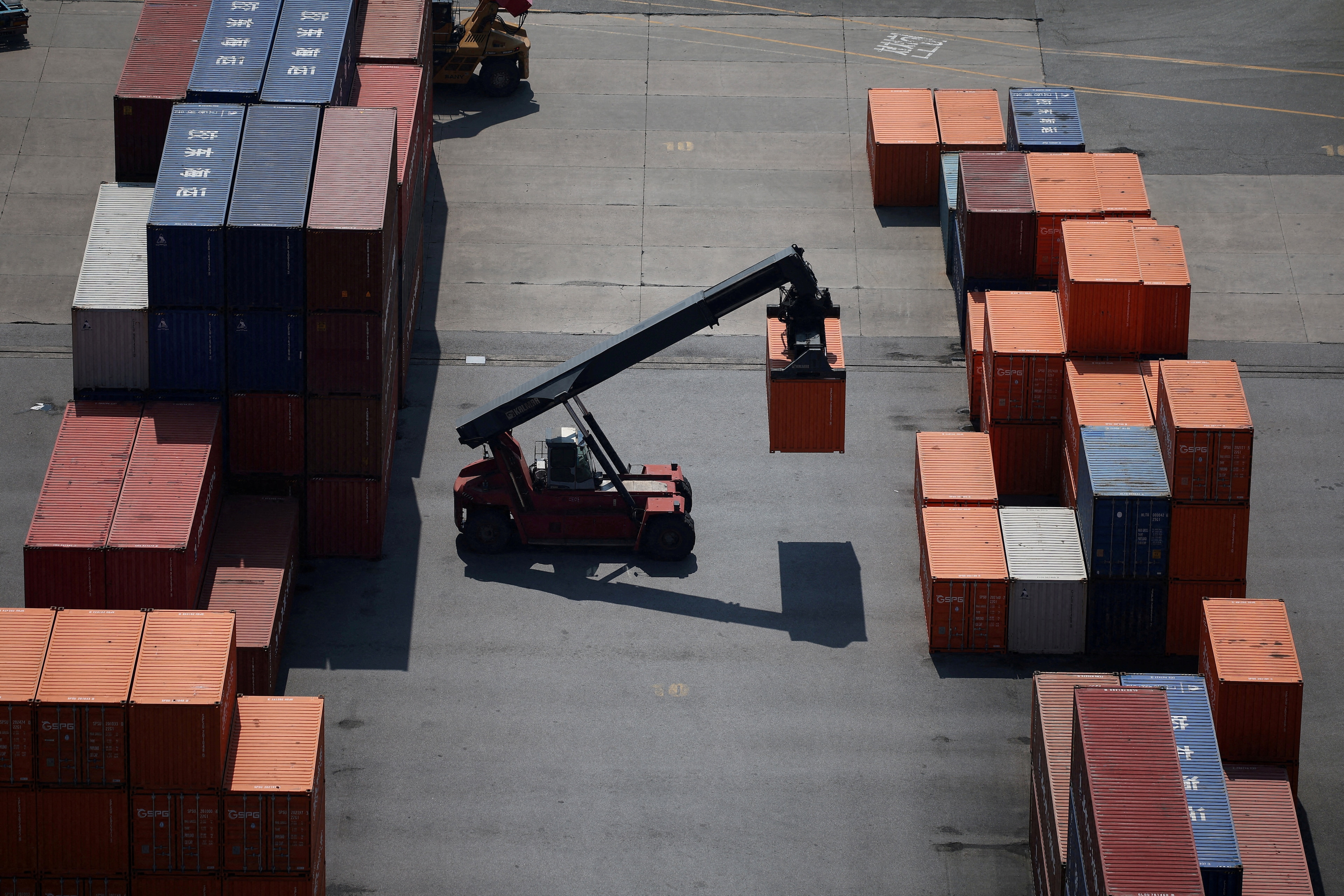How the shipping industry is sailing towards zero-emission targets

The shipping industry is on a mission to reach net-zero Image: Photo by Andy Li on Unsplash
Listen to the article
- The shipping industry aims to align with a 1.5 degrees Celsius trajectory in accordance with the Paris Agreement, this requires that zero-emission fuels make up 5% of international shipping fuels by 2030.
- Shipping’s 2030 breakthrough target rests on an increased supply of technology, mobilisation of finance, supportive policy measures, aggregated demand for scaleable zero-emission fuels and an equitable approach that ensures a truly global transition.
- Actively tracking the industry’s progress towards 5% will help identify current gaps and challenges to inspire action.
The shipping industry contributes to almost 3% of global greenhouse gas emissions annually. If it were a country, it would be considered the sixth largest emitter. This form of transport, however, is central to the movement of goods, with about 90% of global trade being carried on ships, and private and public stakeholders are working to understand how to make it more sustainable.
For the shipping industry to meet a 1.5 degrees Celsius target in line with the Paris Agreement, the sector must meet its 2030 breakthrough goal of having scaleable zero-emission fuels make up 5% of the international shipping fuel mix. As 2030 is fast approaching, there is a need for increased transparency and accountability on progress towards this target. In 2021, UMAS put together an action plan for delivering zero-emission fuels in shipping. Now, the UNFCCC High-Level Climate Champions Team and UMAS, with support from the Getting to Zero Coalition, have released a progress report that indicates the sector is partially on course, but there are a few bottlenecks to tackle to ramp up impact.
How is the World Economic Forum ensuring sustainable global markets?
5 change levers underpinning shipping’s energy transition
This fuel transition can be broken into three phases: an initial emergence, where innovation increases the market viability of the new fuel; diffusion, where the new fuel increases its market share and price competitiveness compared to existing options; and reconfiguration, where the new fuel achieves market dominance. Shipping is now in the emergence phase and five distinct sets of change levers will support its progress from emergence, through diffusion to reconfiguration.
Actions must be carried out by various actors in regard to technology/supply and demand related to the new fuels. These include: bunkering infrastructure development, fuel production, on-board propulsion innovations and consolidation of zero-carbon freight demand; finance and policy mechanisms that can support the transition; and, finally, civil society action by individuals and organizations to expand representation, urgency and visibility of shipping decarbonisation.

All five levers are partially on track, with some progress already made, but many areas remain where progress is necessary. In terms of demand and technology/supply, there are at least 203 shipping decarbonisation pilot and demonstration projects already in the pipeline internationally. Progress has also been made regarding bunkering and safety guidelines.
Now, the main challenge is to move from commitments to investment and infrastructure development. In reference to finance, there are growing commitments, such as the Poseidon Principles, which account for over 50% of shipping debt finance, but further progress in financial commitments for fuel production and bunkering infrastructure is required.
Policy developments have also progressed, with IMO developments on shorter-term measures and GHG emission pricing. Similarly, civil society developments have intensified with the increased visibility of several initiatives, but more opportunities in emerging economies should be leveraged.
Implications for shipping and other stakeholders
The past two years have seen significant progress towards 2030 goals in terms of alignment, with all actors across the value chain uniting behind this common goal to lay a solid foundation. We are, however, at a crossroads. More effort is needed to convert these commitments and pledges into actionable solutions.
Energy companies need to have greater confidence in the expected demand from the shipping sector when planning green energy development projects. Cargo owners need to be mobilised to take part in cross-supply chain collaboration and investment, including paying a premium for zero-emission fuels on a corresponding percentage of their freight. Investors need to quantify the amount of investment needed across the value chain. Shipping companies need the confidence to plan and invest in new builds and retrofits. And, regulators need to ensure a level playing field is in place to enable the transition.
Understanding what actions are progressing well and which are falling behind is instrumental to mobilising effort where it is the most impactful. International action at the IMO is required, as, without this, the 5% goal becomes difficult to achieve. For rapid, wide-scale uptake of the zero-carbon fuels needed in the 2040s, a full-sector decarbonisation policy is key for mass adoption.
Furthermore, international policy developments at the IMO and on a plurilateral level are needed to accelerate global decarbonisation trends. These should include timely adoption of short and mid-term measures at the IMO that are in line with 5% SZEF adoption and full decarbonisation by 2050.
Domestic policy is central to supporting the necessary production and bunkering infrastructure to decarbonise domestic shipping. In addition, a multitude of wide-ranging industry actions across the maritime shipping industry is necessary. This includes investment in the development of SZEF production pathways, with over 210 production facilities, and the availability of SZEF in at least 20 key ports alongside investment technologies for use onboard.
Freight purchasers will also have to commit to the uptake of at least 5 million TEUs of zero-emission freight by 2030. Shipowners will also have to commit to ordering only zero emission-ready ships. Finally, industry participation in demonstration projects, pilots and R&D in the short term will help shape best practices and increase cross-value chain engagement.

Opportunities for further action
This marks a significant milestone on the road to COP27. It signals that a true shift to delivery is needed, inclusive of all non-state and state actors, to drive real change. This shift will not be possible, however, without radical collaboration across the entire maritime value chain and through the value of public-private partnerships working together to drive forward the transformation needed on all levels.
The 5% 2030 breakthrough goal is the floor, not the ceiling. If we don’t take early action now to make deep cuts in emissions this decade, the transition will be more disruptive and expensive in the future. COP27 provides a platform to continue to unlock barriers and enables and rapidly scales pockets of solutions happening in the sector.
It is clear that the shipping industry is intent on taking a leading role in the just, healthy and resilient transition to a zero-carbon world. We must continue to monitor and track our progress towards this and see this as a signal to strengthen collaboration, accelerate pace and convert commitments to actions.
Don't miss any update on this topic
Create a free account and access your personalized content collection with our latest publications and analyses.
License and Republishing
World Economic Forum articles may be republished in accordance with the Creative Commons Attribution-NonCommercial-NoDerivatives 4.0 International Public License, and in accordance with our Terms of Use.
The views expressed in this article are those of the author alone and not the World Economic Forum.
Stay up to date:
Trade and Investment
Related topics:
Forum Stories newsletter
Bringing you weekly curated insights and analysis on the global issues that matter.
More on Trade and InvestmentSee all
Lim Chow-Kiat
August 21, 2025






